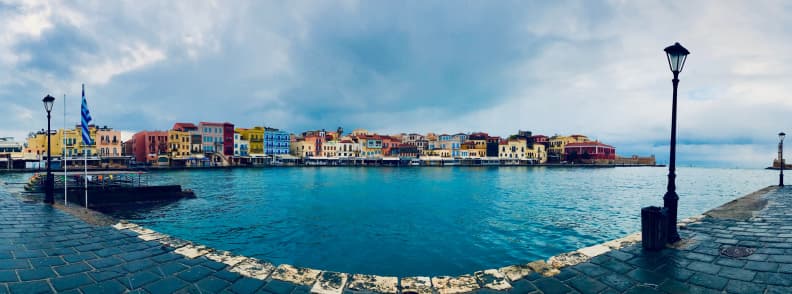The beaches of western Crete are among the finest in Europe. From the golden expanses of Falassarna to the pinkish hue of the sand at Elafonissi, this part of the island is blessed with a lovely Aegean shoreline.
Elsewhere, there are hidden coves, pebbly inlets, and always a taverna for a traditional Mediterranean lunch.
What also makes this part of Greece’s largest island so appealing are the rugged mountains that run down to the coast. Within them are gorges, remote villages, and a way of life that has barely changed in decades. Combined with the coastal attractions, these all add to the appeal of Crete.
Off the beaten track in Western Greece
An interesting way to explore this part of the island is by hopping on one of the regular “fun train” departures that meander along the coast or inland through gorges and mountain roads, pausing at landmarks, unspoiled villages, wineries, and olive oil plants.
One departure, for example, passes through Kissamos and Kolymbari and then winds its way above the shoreline to the Gonia Monastery before heading on to the villages of Afrata, pausing for a Greek coffee in the village taverna, and to Astratigos, with the final stop at a local winery.
There are seven off-the-beaten-track routes across western Crete that you can take by road train, with each trip lasting between two-and-a-half and four hours, and costing 20 euros.
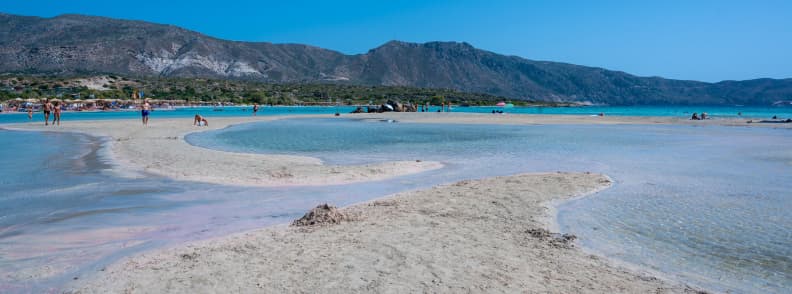
Beach life in West Crete
But as we’re on holiday, the beach always has an irresistible charm.
Elafonissi is a favorite and frequently ranked among the top beaches in Europe with its pink sand and crystal-clear seawater. The shade of pink is the result of minute shell fragments that sit within the natural white sand. These shells have been gently ground by the waves over thousands of years to create the unique ambiance of Elafonissi.
Meanwhile, a true gem on the southern peninsula of Crete is Paleochora with delightful beaches, numerous shops and tavernas, and a timeless ambiance. This is where Cretans head to unwind on the coast for a few hours on Pachia Ammos beach.
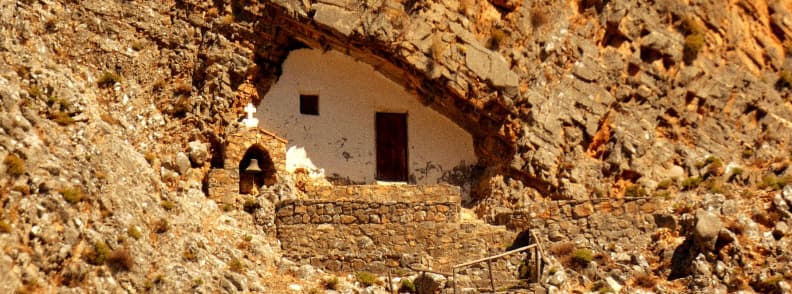
Hidden gorges
For those who want to be more active, there are opportunities to explore the mountains and gorges on hiking tours, particularly the Samaria Gorge, which is one of the longest and most dramatic in Europe.
The walk is downhill for much of the way and can take 4-6 hours to complete the 17km route from the heart of the island to the village of Agia Roumeli on the southern coast.
As you descend into the gorge you experience the beautiful flora and fauna of the Samaria National Park, with the sheer cliff sides soaring to 600m in places. Towards the end of the Gorge, you traverse the narrowest point where the cliff walls are only a few meters apart.
When you reach Agia Roumeli you can relax on another beach, this time on black sand, and enjoy lunch with a refreshing beer or glass of wine in a taverna before catching the ferry out to Chora Sfakion or Sougia.
There are also other inland gorges to walk as well as coastal paths to Loutro, or the E4 hiking route from Paleochora.
The local fauna and flora
There is, however, so much more to explore. If you love Mediterranean flora and fauna, the Botanical Park & Gardens offers a fabulous insight into the island’s native plants and trees, as well as specimens from across the globe. Set at the foot of the White Mountains (Lefka Ori), a few miles from Chania, the park covers around 20 hectares with a circuitous route around the landscaped areas.
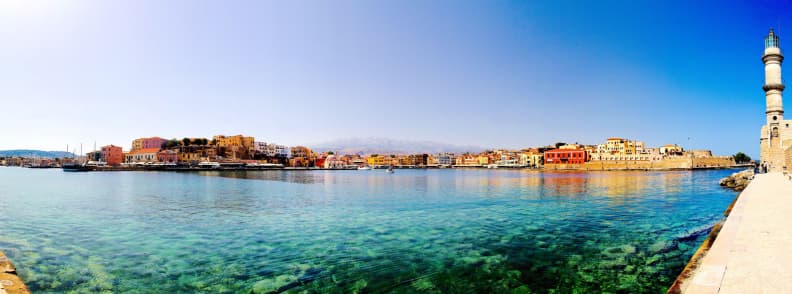
The Venetian harbor
Western Crete is centered on the Venetian harbor city of Chania as the regional capital, with its delightful waterfront bordered by cafes and restaurants, and narrow streets and alleys leading back into the town where you’ll find fascinating shops and places to buy gifts and souvenirs.
You can easily spend a day in the city, or pop in mid-afternoon, and pause for a cocktail before enjoying a superb meal at one of the harbourfront tavernas.
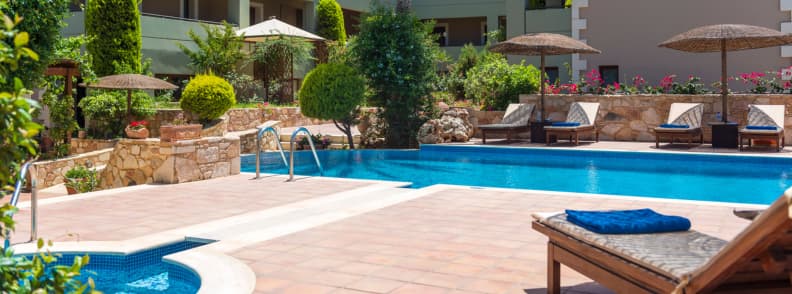
Mistral Hotel
Accommodation is plentiful across the region, but a popular hotel is the Mistral at Maleme, which specializes in holidays for independent solo travelers. With lovely double rooms for single occupancy, but no single supplement, it has two pools, a relaxed atmosphere, and an outdoor bar.
One of the big attractions is the cuisine of its restaurant, with all dishes highlighting the best of traditional, healthy Cretan food. Here, dinner is served together on log tables, creating a sociable and friendly atmosphere for solo travelers.
The Mistral Hotel organizes excursions to several locations in Western Crete but is also an ideal base to head off and explore the island at your leisure.
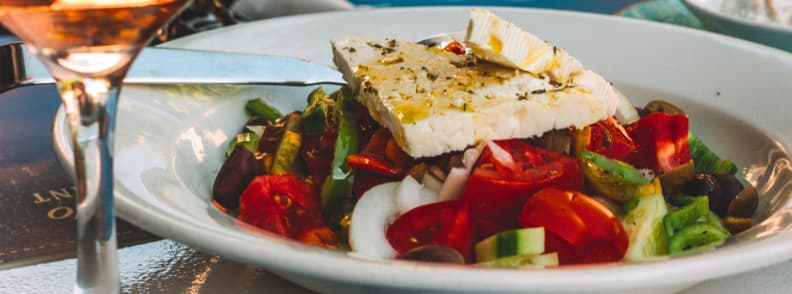
Seafront tavernas
Maleme is located on a main bus route to Chania and the resort area of Platanias. In the opposite direction, excursions to Kissamos and Kolymbari – with their regular market and excellent seafront tavernas – make for an enjoyable day out.
You’re also just a short walk down to the seashore where there is an array of restaurants and tavernas.
While Maleme has plenty of shops and restaurants there are more at Platanias and in Chania, which is one of the most charming harbor towns in the whole of the Mediterranean.
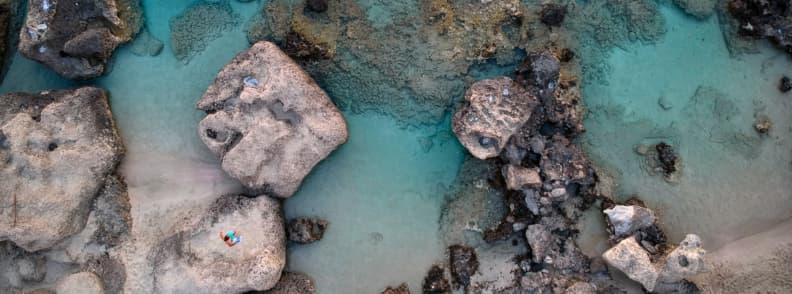
The secluded bay & timeless appeal of Western Crete
Two outings organized by the Mistral Hotel which are particularly popular are to Loutro and Falassarna.
The trip to Falassarna takes in the magnificent beach and is followed by a fish lunch at a family-run taverna at Sfinari. There, you can even venture into the kitchen to watch the food being prepared – including the delicious fish soup (kakavia).
Meanwhile, Loutro is an idyllic Cretan village, reached only by boat from further along the coast. If you take the motor vessel from Chora Sfakion, there’s time to pause at the secluded Sweetwater Bay, where you can hire a sunbed and relax by the water’s edge for a couple of hours before continuing on to Loutro. The village has timeless tavernas and shops around the harbor, where you can enjoy a relaxed Greek coffee before re-boarding the vessel to head back to Chora Sfakion.
There are also trips from the hotel to Chania, the picturesque Gramvousa peninsula, and further afield to Rethymno and the historic Minoan site at Knossos.
The lovely harbors and fishing villages, historical and archaeological sites, and the rugged beauty of the mountains that lead all the way down to some of the best beaches in Europe are why western Crete has such a timeless charm.
Mistral Hotel, Maleme has 35 standard and deluxe rooms – all for single occupancy – including breakfast and dinner, for € 1,036 for a seven-night stay in July. The hotel also runs interesting themed weeks at the beginning of the season in May and later in the season during October. These include walking, yoga and well-being, and a flavors of Crete week where guests can cook and learn more about the local cuisine. There is also a writing week planned for mid-July.
For more details visit www.singlesincrete.com.

The magnificent landscapes, pristine beaches, and rich history of Western Crete have always captivated travelers looking for a unique adventure. As an experienced travel blogger with a keen eye for hidden gems, Mirela Letailleur is the go-to person for anyone looking to discover the top attractions in Western Crete. Her blog, The Travel Bunny, not only provides valuable insights into affordable travel in Europe but also offers detailed travel guides on the best places to visit in Crete.
Mirela’s expertise as a local travel expert and problem solver makes her the perfect guide to help you plan an unforgettable trip to Western Crete. So, whether you’re a culture vulture, a nature lover, or simply looking for a relaxing holiday, Mirela’s insider tips and travel advice will ensure you make the most of your time in this incredible part of the world.
Planning to visit Western Crete and beyond? Check out the blog posts on The Travel Bunny
Rethymno Crete: A charming & unforgettable destination in Greece
Crete yacht charter: Full guide to renting a boat in Crete
Guide to sailing the Cyclades Islands in the Aegean Sea

